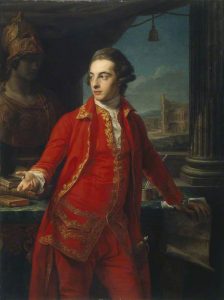I visited Paris recently and during my stay I noticed that many tourists were taking their photos seriously – spending long periods of time in front of monuments trying different poses, different angles and even changing outfits in an attempt to take the perfect photo. However, in the age of Instagrammable tourism, this is unsurprising. Instagrammable -tourism, or Insta-tourism, is the use of Instagram by organisations or individuals to promote or research travel opportunities, involving often staged travel photos or videos in ‘Instagrammable’ locations. In recent years, we have witnessed the increasing power of Instagram, and social media in general, in influencing where people choose to travel. A 2015 poll found that almost half of Instagram users rely on the images of others to plan their travels, with ‘Instagrammability’ being one of the most important factors in dictating where a tourist chooses to travel, particularly amongst millennials.
Tourism itself can be traced back to ancient Rome. Among elite Romans, trips were undertaken for religious, sporting and wellbeing reasons – this included travel to spas or hot springs. In the Middle Ages, it became more common for the middling and lower sections of society to go on pilgrimages in Islamic, Judaic and Christian traditions. However, it is in the late seventeenth century where we can pinpoint the origins of modern tourism. ‘The Grand Tour’ was an educational tour across Europe which became popular amongst young, elite men. The tour typically began in England and culminated in Rome and was fashionable from the late seventeenth to the early nineteenth century.
As these rich young men embarked on the Grand Tour, many of them commissioned their own Grand Tour portrait. Pompeo Batoni (1708-1787) was the most celebrated portraitist among the travellers and often painted his subjects against backdrops featuring well known Italian monuments and buildings. The painting below demonstrates this – the Colosseum can be seen in the background to the right and the sitter is depicted resting his arm on a map of Rome. These portraits served as proof of the traveller’s physical presence in Europe and also showcased the new learning, clothes and cultural objects they had acquired on their journey. In effect, the Grand Tour portrait was the ultimate signal of elite status.

Batoni, Pompeo; Sir Gregory Page-Turner; Manchester Art Gallery; http://www.artuk.org/artworks/sir-gregory-page-turner-204425
The Grand Tour remained a fashionable fixture in the lives of the European elite until the 1840s, at which time the European railway system began to expand significantly, opening up the possibility of leisure travel to the middle and lower sections of society. Following the developments in transportation, photography-based tourism also began to evolve. One of the first photography expeditions was undertaken by French photographers Francis Frith and Maxime Du Camp to North Africa and their photos were subsequently developed into prints and postcards. This development highlights how travel photos quickly developed into desirable objects to be collected and to display consumer prowess.
Over the course of the twentieth century, the tourism sector continued to expand with the creation of commercial airlines being crucial to this. In more recent years, we have witnessed the rise of Instagrammable tourism as Instagram has continued to grow in popularity, now boasting over one billion users per month. In conjunction with the growth of Instagram, we now see travel being undertaken purely for the purpose of self-presentation on social media.
Instagram-driven tourism has received much critique in recent years due to the detrimental effects of ‘overtourism’, whereby communities in locations made popular by Instagram are ill- equipped to cope with the mass amounts of tourists descending on their towns and villages. Geotagging in particular is a large contributor to overtourism in areas that are small and remote, where tourists hunt for the exact same photo spots tagged on Instagram.
Anyone who has been on social media in the last ten years will know that Bali has become a highly sought after Instagrammable holiday location and it is having a negative impact on the community, with swathes of land being transformed each year into luxury hotels for rich foreigners to the detriment of local communities. More and more often, tourists are being driven to certain locations by their desire to capture the perfect photo of themselves to then upload to Instagram or other platforms. Take Bali for example; hundreds of videos can be found following a search for ‘the best Instagrammable spots in Bali’, on Youtube and TikTok, with some videos explaining how to undertake an ‘Instagram tour’ of the island.
A common theme emerges with Instagrammable tourism, in that tourists often misrepresent a location, leading to trends such as ‘Insta vs reality’ on TikTok, where tourists express disappointment with the reality of a location in comparison to the images that they have been fed on Instagram. This is because the use of Instagram allows tourists to curate and share the perfect holiday narrative in a performance for friends, family and followers. Holiday photos become a performance for the consumption of others. However this is not a new tendency, demonstrated by the way in which elite European men commissioned portraits to depict their travels on the Grand Tour across the eighteenth century. The difference is that a greater number of people now have the means to prove to the world how well travelled they are, simply by taking a selfie and pressing share.